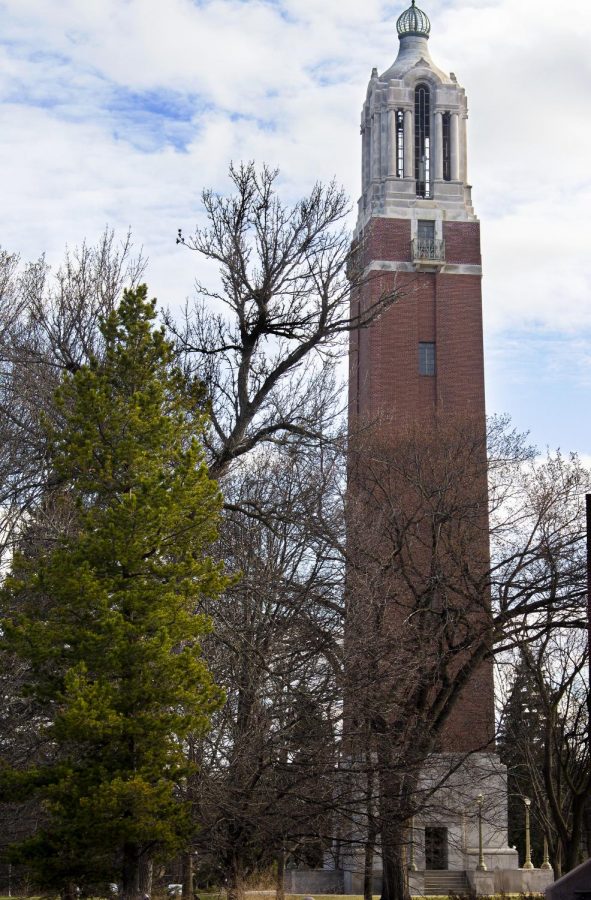Brookings’s rich history shows in historic sites
May 4, 2021
Founded in 1883, Brookings is the fourth largest city in the state with a population of over 24,000 people. With such a long history, sites like Nick’s Hamburger Shop and the Coughlin Campanile are a must-see while in town.
Nick’s Hamburger Shop at 427 Main Ave. was opened in 1929 by Harold Niklason and his wife Gladys, and since then has had five different owners. Nick’s was added to the National Register of Historic Places in the 1980s.
After almost 100 years, Nick’s is still one of the best spots in town to get a burger, according to the locals.
“We sell more cheeseburgers now than we do hamburgers,” owner Todd Fergen said. The option for cheese on your burger was first implemented by Duane Larson, who owned the shop from 1975 to 2004.
The rich history of Nick’s Hamburger Shop is what brings people from all over together. Fergen has been the owner of Nick’s since 2013. Previous owner Dick Fergen, Todd’s father, operated the shop for nine years before his death in 2013.
“It’s all community,” Fergen said. “The heritage of this place is only an icon because of the community who made it that way.”
Another historic site in Brookings, the Coughlin Campanile, is a must climb while on South Dakota State’s University campus. The Campanile cost $79,000 to build and was gifted to SDSU by graduate Charles Coughlin. The 165-foot structure was completed in 1930, making it the tallest structure in eastern South Dakota at the time. It has been the heart of campus ever since.
The Coughlin Campanile was placed on the National Register of Historic places in 1987.
Speaker, author and South Dakota State Sen. of Brookings V.J Smith was the director of the SDSU Alumni Foundation from 1996 to 2006 and helped raise money for the renovation of the Campanile during that time. The restoration included replacement of limestone at the base and concrete work on the bricks, and was completed in 2001.
“Every senior needs to do that,” Smith said, referring to climbing the Campanile. “I think it’s a loss for people because well, obviously, when someone is 85 years old, they’re probably not going to walk all those steps.”
The Campanile used to have a full-time employee at its base because of the flow of tourists who visited the structure years ago. You can now get the key from the Alumni Foundation located across the street and make your way up the 187 steps it takes to get to the top.
“I’m just going to tell you, 20 to 30 years from now when you come back and you look at the structure, you’re going to think about it a little bit differently because you took the time to walk up those steps,” Smith said.
Four historic districts make up the city of Brookings, and 83% were developed between 1894 and 1928. These include the University Residential Historic District, the Central Residential Historic District, the Sexauer Seed Historic District and the Commercial Historic District.
Mike Struck, community development director for the city of Brookings, has lived here for 15 years, and has worked directly with the Brookings Historic Preservation Commission since July 2020. The Community Development Office answers questions regarding community development initiatives that now include the historic preservation of buildings in the city.
“It’s really interesting when you look at the community and the mixture of houses, especially in the central and university districts, because you’ve got pockets of housing that the owners have really bought into historic preservation,” Struck said.
The new historic preservation plan for Brookings was unveiled by the Historic Preservation Commission members in February 2021 and was presented to the city council April 27, 2021. The plan discusses information that will benefit the historic preservation of Brookings. It also defines various goals the commission wishes to implement over the next 10 years.





















